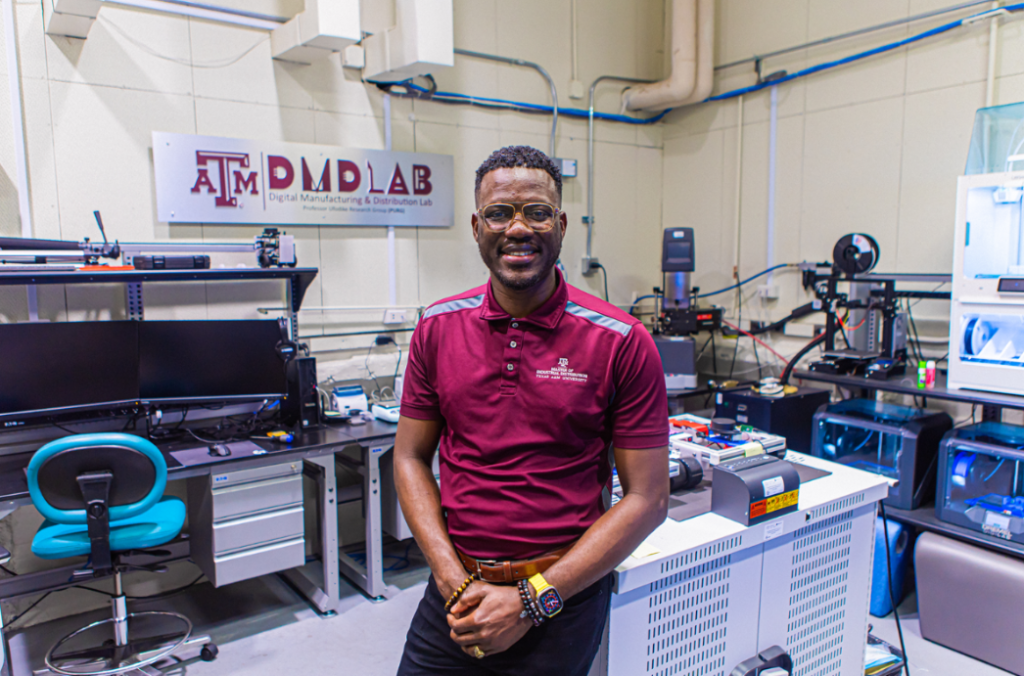Metal filament manufacturer The Virtual Foundry has partnered with the Texas A&M Engineering Experiment Station (TEES), an agency of The Texas A&M University System, to conduct research in the field of metal 3D printing.
Led by Dr. Chukwuzubelu Ufodike, this research is aimed at investigating the effects of sintering temperature and time on Fused Filament Fabrication (FFF) 3D printed titanium alloy parts. Dr. Chukwuzubelu Ufodike said, “This collaboration represents a significant stride in advancing our understanding of sintering processes in 3D printing. Together with The Virtual Foundry and TEES, we aim to push the boundaries of material development in additive manufacturing.”
Titanium 3D printing precision with Fused Filament Fabrication
FFF is a 3D printing technology that involves layering and fusing continuous filament material to create 3D objects. In the context of 3D printing titanium parts, FFF refers to the specific process of using titanium filament in a layer-by-layer fabrication. The benefits of using titanium in this process, such as its high strength, low weight, and corrosion resistance, make it suitable for various applications across industries like aerospace, healthcare, and engineering.
The partnership between The Virtual Foundry and the TEES is set to deliver crucial benefits, including an in-depth understanding of the complex relationship between sintering temperature and time in FFF-printed titanium parts. By exploring variations in sintering parameters, the research aims to unveil insights into the resulting microstructural evolution and mechanical behavior.
Moreover, it seeks to advance knowledge on how the sintering parameters impact dimensional accuracy and surface quality posing as critical factors influencing the precision and finish of the FFF-printed titanium components. Tricia Suess, President at The Virtual Foundry added, “We’re thrilled to be working with Dr. Chukwuzubelu Ufodike and TEES. Their expertise will be instrumental in closing the gap between inexpensive titanium 3D printing and the current process of sintering it, which today is out-of-reach for the average user.”
In 2022, The Virtual Foundry introduced a novel method for debinding and sintering FFF 3D printed alloys. Its Metal Microwave Sintering technology replaces traditional kilns with a microwave, offering a potentially faster and more cost-effective approach.
In the experimental phase, results were promising for post-processing aluminum parts. The use of a microwave demonstrated the potential to extend processing to challenging reactive alloys like titanium without oxidation concerns, marking a notable advancement in past metal 3D printing practices.

Metal 3D printing research initiatives
Researchers from institutions including the National Institute of Standards and Technology (NIST) and KTH Royal Institute of Technology studied how cooling rates impact metal properties during laser powder bed fusion (LPBF) 3D printing. Published in Acta Materialia, this study provides insights into crystal structure effects on toughness and corrosion resistance in printed components.
Validating the Kurz-Giovanola-Trivedi (KGT) model, this study revealed that controlling microstructure during initial 3D printing stages enables the desired crystal structures. Confirmed through synchrotron experiments, this finding offers the potential for additive manufacturing professionals to predict and control characteristics of 3D printed metal parts, improving consistency for large-scale production.
Examining the impact of fluid flow on metal 3D printed parts‘ mechanical properties, researchers from Tsinghua University and the National University of Singapore focused on dendrite growth, tree-like crystal structures formed during molten metal solidification.
Investigating how dendrites evolve under varying flow conditions, the team discovered that fluid flow and solidification velocity play a crucial role in dendrite formation during metal 3D printing. The findings underline the importance of understanding these factors to enhance the mechanical characteristics of 3D printed metal components.
What does the future of 3D printing for the next ten years hold?
What engineering challenges will need to be tackled in the additive manufacturing sector in the coming decade?
To stay up to date with the latest 3D printing news, don’t forget to subscribe to the 3D Printing Industry newsletter or follow us on Twitter, or like our page on Facebook.
While you’re here, why not subscribe to our Youtube channel? Featuring discussion, debriefs, video shorts, and webinar replays.
Are you looking for a job in the additive manufacturing industry? Visit 3D Printing Jobs for a selection of roles in the industry.
Featured image shows Professor Ufodike in the Digital Manufacturing & Distribution Lab, Professor Ufodike Research Group (PURG). Photo via The Virtual Foundry.



